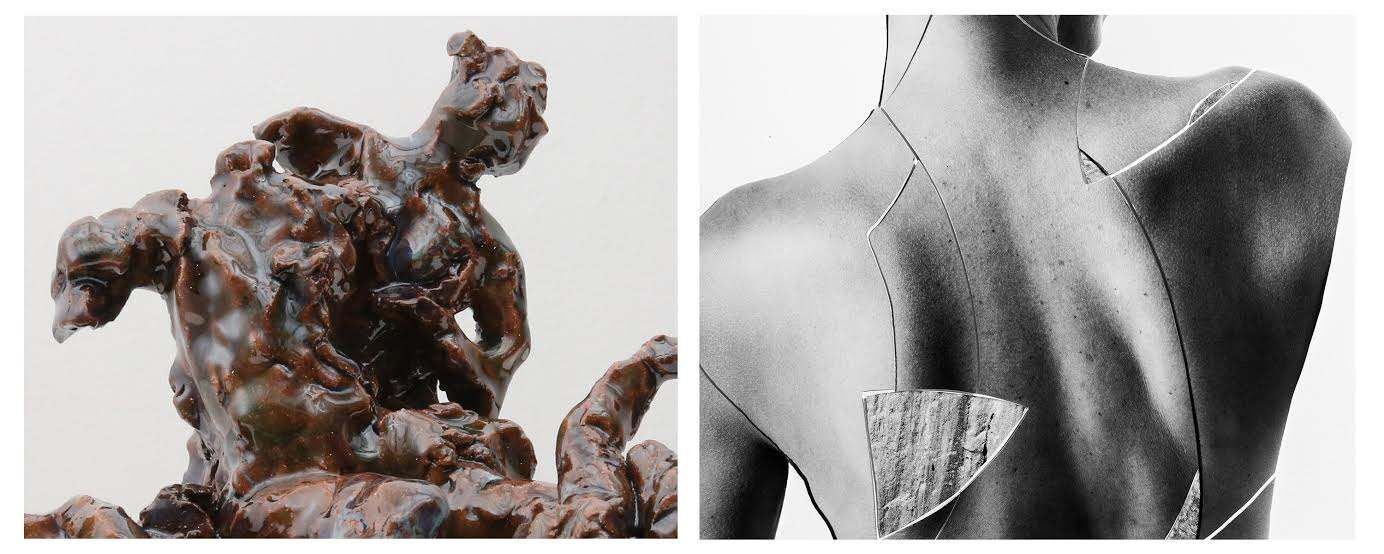
Alumni
Rachelle Dang and Kim Hoeckele at Underdonk
February 23, 2019
RACHELLE DANG and KIM HOECKELE: Crease at UNDERDONK is on view February 23 through March 31, 2019.
Curated by Laura Frantz
How does the body carry history?
New work by Rachelle Dang (MFA Alumna, 2018) and Kim Hoeckele (MFA Alumna, 2012) are presented in an exhibition curated by Laura Frantz (MFA Alumna, 2012) at Underdonk. The show features sculpture and photography made in conversation with history, mining ethnographic, scientific, and art historical images as source material. Through Hoeckele’s lens, Athenian marble, worn away by centuries of human feet, takes on the texture of wrinkled skin. A terracotta of Venus, under Dang’s hand, goes from idealized to abject. The artists complicate the legacy of this history and challenge the authority of the cultures that created them. Their work proposes a messier standard of beauty: one that is mixed, eroded, and patched together; creased but also caressed.
Dang’s sculpture challenges European ways of seeing, particularly in the historically colonized region of the southern Pacific. The terra cotta figures on display here are modeled after mythological paintings depicting the marine Venus and her attendants by Nicolas Poussin, Sebastiano Ricci, and François Boucher – scenes which informed European views of Polynesia. Dang’s process breaks down the Neoclassical elegance of the original, revealing Venus and Triton as “constructions, fantasies, fallacies.” She continues, “I wanted these figures to speak simultaneously through sensuality and distress, disrupting cohesion and ideas of utopia. The sculpting process required me to gouge and hollow, but I pushed this action further in order to disfigure and corrupt.”
Hoeckele’s photography deals directly with art historical archetypes, as well. She photographs herself mimicking the body postures and gestures of seminal images of women in the Western cannon, such as ancient Greek and Roman sculptures of Aphrodite. Hoeckele layers different poses, body parts, and materials in her photographs, cutting them and re-photographing them until the separate components cohere into new, hybrid figures. In making sense of these hybrids, the viewer must reevaluate how bodies, particularly women’s bodies, have been historically presented, dissected, and consumed.
Both artists employ the entropic forces of nature to counterbalance Classical notions of order. In Dang’s sculpture “Garlands for the Listener,” a riot of clay flowers and ear-like appendages take over a chain-link fence, transforming a barrier into a vertical garden. The color palette of her work evokes decay and breakdown, or the bleaching of coral on a reef. Hoeckele’s photograph of quarried stones in a Roman Agora contrasts stark man-made cuts with the rippled, age-worn texture of the marble itself. Fragments of wall and road, constructed two centuries ago, have been rubbed, eroded, and in the process polished to a sheen.
